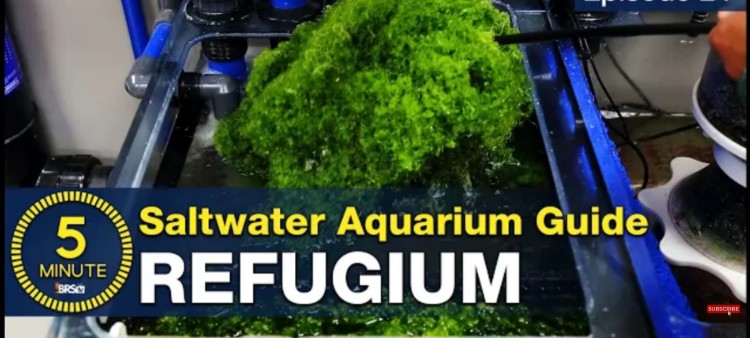A Guide to Saltwater Aquarium Refugium
- Jan 17, 2022
- Anshika Mishra
- 396 0 0

We all want to avoid algae growth in our reef tanks as a reefer. But, this time, we will show you exactly why growing algae in the back is not just one of the best ways to do it and why it is so easy.
Refugium
Refugiums are filtration components where we intentionally grow certain forms of algae and plants and uptake pollutants from the tank. It is not fancy, but it is one of the coolest and the most effective way to deal with excess nitrates and phosphates that can build up in a new tank.
Phosphate and nitrate build-up and pest algae or slimes that can feed on are less common in your last tank than in your first year. There are various reasons that the first year is more challenging, including just experience, managing, feeding, filtration, and maintenance.
One of the bigger reasons it is uncommon in later tanks is that you will have lots of corals, and the tank will also be bigger. This is because the corals will suck up most of the excess nitrate and phosphate themselves.
Your coralline algae coverage is solid, microfauna and cleanup crew are established, and you don't have to be as concerned about nitrate and phosphate in older tanks. But, in the first year of keeping the levels down and make things a lot easier.
There are other ways than refugium to do that, and you can up your water change game, be super stingy with feeding, consider removal media, or promote bacterial solutions. But none of that is easy as walking by a and full of Chaeto and just throwing it in the trash.
It is nearly impossible to mess up once you get that refugium going.
How does the Refugium Works?
The tank's excess fish good and waste eventually breaks down into excess nitrate and phosphate. Nitrate and phosphate effectively plant fertilizers that promote algae growth when combined with light.
More or less, more light and nitrate and phosphate mean more algae.
However, with the refugium, rather than growing algae in the display tank, we grow easy to harvest algae, most often Chaeto, in a filtration compartment.
This doesn't just work well. In some cases, it might even work too well, meaning the refugium can strip the water of nearly all the traces of nitrate and phosphate. For ease, you can choose a tank with a sump that you can add and figure out a fuge solution.
But for a new reefer, first tank, maintaining the simplicity of an all-in-one design is more important than the fug, so we are just going to go without. Yes, hang-on gear is not super attractive, but with the first tank, the outside look must be secondary compared to what it looks like on the inside.
Choosing the Right Gear
A high success path to your first tank and a refugium will help you with that. A fuge is an optional filter. You don't need to put one on if it violates your aesthetic desires for the tank. Instead, you can choose the best fuge waterproof light with a spectrum designed more for the same purpose.
Some of the most advanced installs might try the top and the bottom. The last few years have been a refugium evolution, and it is all based on using proper lighting. Suppose you want to outcompete the algae growing in front of the tank. We will actually need to apply the same level of effort to the back of the tank.
Setup the refugium light opposite to the lighting schedule of the display tank. It doesn't just help with the pH in the tank but also makes sure the fuge doesn't compete with the lights on the front of the tank at the same time.
You may also find that the two-hour life cycle isn't enough or works too well. You want to remove more nitrate and phosphate, leave the fuge light on longer, maybe max out about 18-hours or so, or a potential 50% increase in uptake.
If you want to reduce the uptake, shorten the photoperiod to six hours or a potential 50% decrease. So adjusting your filter is just changing the time it is on and super easy. There are a variety of algae that can grow in a refugium, but Chaeto, is the easiest, and because of that, the best for a new tank.
NOTE: Do not get algae from someone else's tank under any circumstance because there is an extremely high likelihood that it will come with some pest you don't want in your tank.






About author